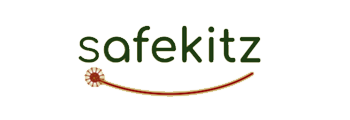A Complete Guide To PPE (Personal Protective Equipment)
What is PPE?
Personal Protective Equipment (PPE) consists of safety helmets, gloves, eye protection, hazmat suits, high-visibility clothing, safety footwear, safety harnesses, earplugs, ear defenders, PPE suits, and respiratory protective equipment (RPE). In most situations, disposable PPE may be provided, e.g., single-use coveralls. Employers have responsibilities concerning the provision and use of personal protective equipment at work.
Why is PPE necessary?
PPE is essential because some workplace environments contain serious dangers, especially industrial sites and factories. Even with appropriately trained staff and sensible working practices in place, sudden mishaps, equipment failure, or even just a moment’s inattentiveness can all lead to severe injuries. Common hazards include heavy objects falling onto hands and feet, corrosive liquids being splashed, or objects being ejected after falling and striking employees. Other dangers may be less intense but potentially just as severe in the long term –such as air contaminants. Modern, carefully designed PPE significantly reduces the chances of injury and can make all the difference between a situation in which a worker walks away from an accident and one in which he or she does not.
PPE Guide For Workplaces
The PPE duties for employers are:
- To carry out a risk evaluation of the workplaces and work activities they are responsible for and through the implementation of the risk assessment findings, remove or, as far as is reasonably practicable, reduce the risk of the identified hazards causing harm to workers or others who may be present in the workplace;
- Provide PPE where other means fail to reduce the risk presented by hazards in the workplace to an acceptable level;
- Assess to identify the most appropriate types of PPE for use in the workplace.
PPE duties for employees are:
- Correctly use any PPE provided as directed and by following any training, instructions, or information they have received.
- Return PPE to its storage place after use unless agreed otherwise with the employer.
- Take care of PPE.
- Report defected or lost equipment as soon as they become aware of them.
Types Of Personal Protective Equipment (PPE)
There are various PPE types available, intended both for general, daily use, and in specialized environments. For example, PPE clothing includes safety helmets, safety jackets, specialist thermal and waterproof clothing – and general workwear like high vis jackets and reinforced footwear.
The different types of PPE include:
- Head and scalp protection.
- Respiratory protection.
- Eye protection.
- Hearing protection.
- Hand and arm protection.
- Foot and leg protection.
- Body protection.
- Height and access protection.
How should PPE be used?
- Respirators and breathing masks should be secured at the back of the head first and then positioned on the face, ensuring a close-fitting.
- Gloves should be extended into position, ensuring that the wrist is not left exposed.
- Safety glasses and visors should be placed over the eyes first and then secured at the back of the head.
How to safely take off PPE?
- Respirators and breathing masks should be untied at the back then peeled off away from the face to avoid contact between the face and the device’s front.
- Gloves: the first should be peeled off away from the body, gripping the palm area and pulling. Remove the second glove by inserting a finger beneath the edge across your wrist and pushing forward.
- Remove safety glasses and visors by untying or unlatching them back and pushing forward, away from your face.
When to replace a PPE?
Usually, manufacturers provide information about how to identify a PPE’s “end of life.” This is typically based on a specific date or maximum service time. When a particular piece of PPE is involved in an accident, it needs to be replaced. Or if a PPE does not pass inspection, then you must replace it.
How to dispose of PPE correctly?
Disposable PPE becomes contaminated after some time of use. Dispose of it in designated and properly sealed waste containers.
Personal Protective Equipment (PPE) is legally defined as all equipment (including clothing
affording protection against the weather) which is worn or held by a person at work and protects the user against one or more risks to their health or safety. If you are looking for PPE protective clothing, you can check out SafeKitz’s collection of colorful and classy safety jackets and suits.

